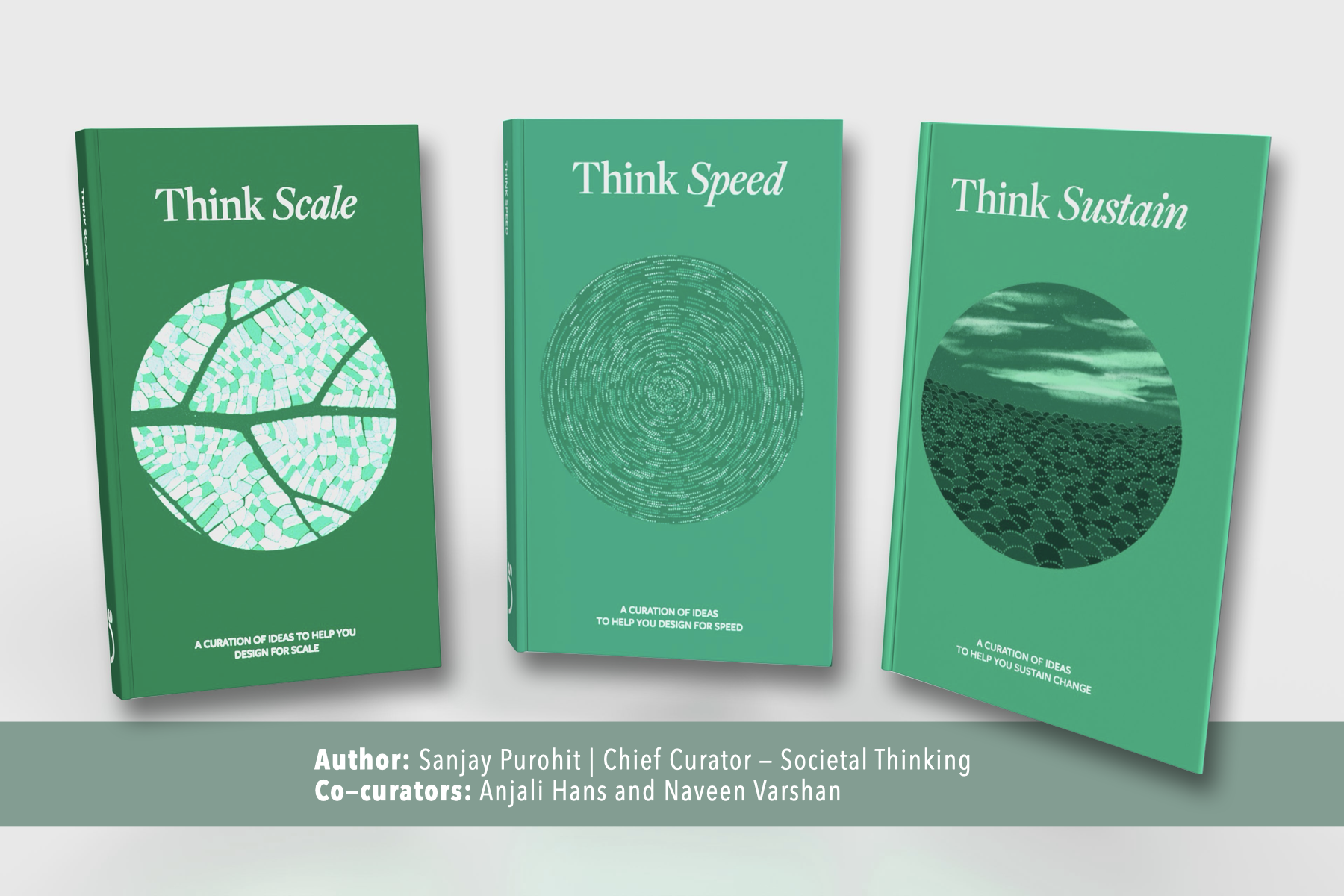A student’s report card influences the national education policy. A family living below the poverty line is able to access welfare schemes through their next-door neighbour. A farmer uses their phone to check the weather forecast, market prices and crop information. Today, everyone’s life is touched by technology in one way or another – especially in India, where Digital India has triggered a shift from physical to digital.
In the mid-2000s, when I had just started my career, filing my taxes was a long-winded process with lots of paperwork. It came as a relief when the process was digitised, and I could fill the same forms online. From 2022 onwards, with digital transformation, I can even find my previous tax data and relevant forms already updated and filled in! Tax filing has become a quick process involving just a few clicks. As I filed my taxes recently, I wondered: How do we design for digital in a way that restores the agency of users?
Many change leaders in our ecosystem have led large-scale transformation – from Aadhaar for financial inclusion, DIKSHA for education and UPI for digital payments. All these journeys have one thing in common – they leverage technology to unlock the pre-existing value of the ecosystem, instead of seeing technology as the solution.
I spoke to a few who are infusing technology into existing habits of people to do just this!
A few learnings emerged:
Begin hybrid to build trust and rapidly iterate
One of our Scalers, Haqdarshak, connects citizens to various government welfare schemes and services through a cadre of field agents (Haqdarshaks). Digital has enabled them to onboard Haqdarshaks fast and efficiently by replacing paperwork with Google Forms and KYC. While the capacity-building for Haqdarshaks remains physical, their onboarding has been simplified.
Savita Muley, Chief Product Officer at Haqdarshak, says, “Most changes, whether it is a platform, process or policy change, have a pathway where we allow 1 to 3 months for people to transition. We start with a specific geography or a subset of users or features, show success, and build from there.”
Make it inclusive by design, especially for last-mile users
In Saharapada of Keonjhar district of Odisha, 300 members of the women Farmer Producer Organization (FPO) faced damage in vegetable produce due to volatile weather and pests. Because of this, acquiring quality saplings became a recurring problem. In early 2022, Digital Green’s National Digital Extension Platform, being built for the Ministry of Agriculture (drawing learnings from DIKSHA), began onboarding farmers. First, Digital Green’s team helped the FPO enter their data in physical registers so that the FPO could use data to negotiate with seed companies for quality and timely delivery. In the first aggregation itself, they made big savings on input price and invested in a polyhouse nursery. In late 2022, Digital Green uploaded the FPO’s data in Excel sheets. Efficiency increased, and the polyhouse distributed a quarter million saplings serving 150 members.
In 2023, the FPO started using Digital Green’s platform for their transactions, member engagement and systems capacity. The platform gave them data through a dashboard, helping them make data-based decisions, improve engagement with members, raise funds from government schemes and drive negotiation with sellers.
“When it comes to accessing targeted timely advisories through agriculture extension, we should be aware that the majority of farmers do not have smartphones and women farmers are farthest in this digital access. Thus, we should adopt the hybrid model to facilitate both digital and in-person interactions. And once the farmers realise the value proposition, they will by themselves invest to build their digital capacities,” said Krishnan Pallassana, Managing Director at Digital Green.
He advised the emerging digital ecosystem in the agriculture space to adapt to the needs of the farmer, building a deep understanding of who the farmer is, what their lifestyle, traditions, cultures and social structures are, and then build tech that will respond to these unique prompts.
Design +1 for adoption at scale
Assessments are crucial to pinpoint learning gaps and barriers faced by students. Even so, digitising the massive volume of assessment data poses a challenge because it is time- and labour-intensive as well as prone to human error. Sunbird Saral has been developed as per the principles of National Digital Education Architecture (NDEAR) and made this challenge obsolete. Data in physical formats can be instantly converted to digital with Saral’s advanced optical character recognition (OCR) technology.
“The physical element is simple and easy to do for educators – filling a template and scanning the same. But what happens now is that the government has large visibility of data that was earlier stuck in physical forms. With this data, they can analyse and make informed decisions, create campaigns and develop policy for reforms. All this in a matter of days, rather than months,” explained Surendra Singh Sucharia, Product Lead at EkStep Foundation. Currently, we are innovating more and faster than ever before. Innovation, as Sanjay Purohit says, isn’t simply about the thrill of something new. It has the potential to improve the lives of people, organisations, communities and society at large. How, then, do we ensure innovation works for everyone? Read more about how diversity can be the answer while designing for inclusion.
 Back
Back


